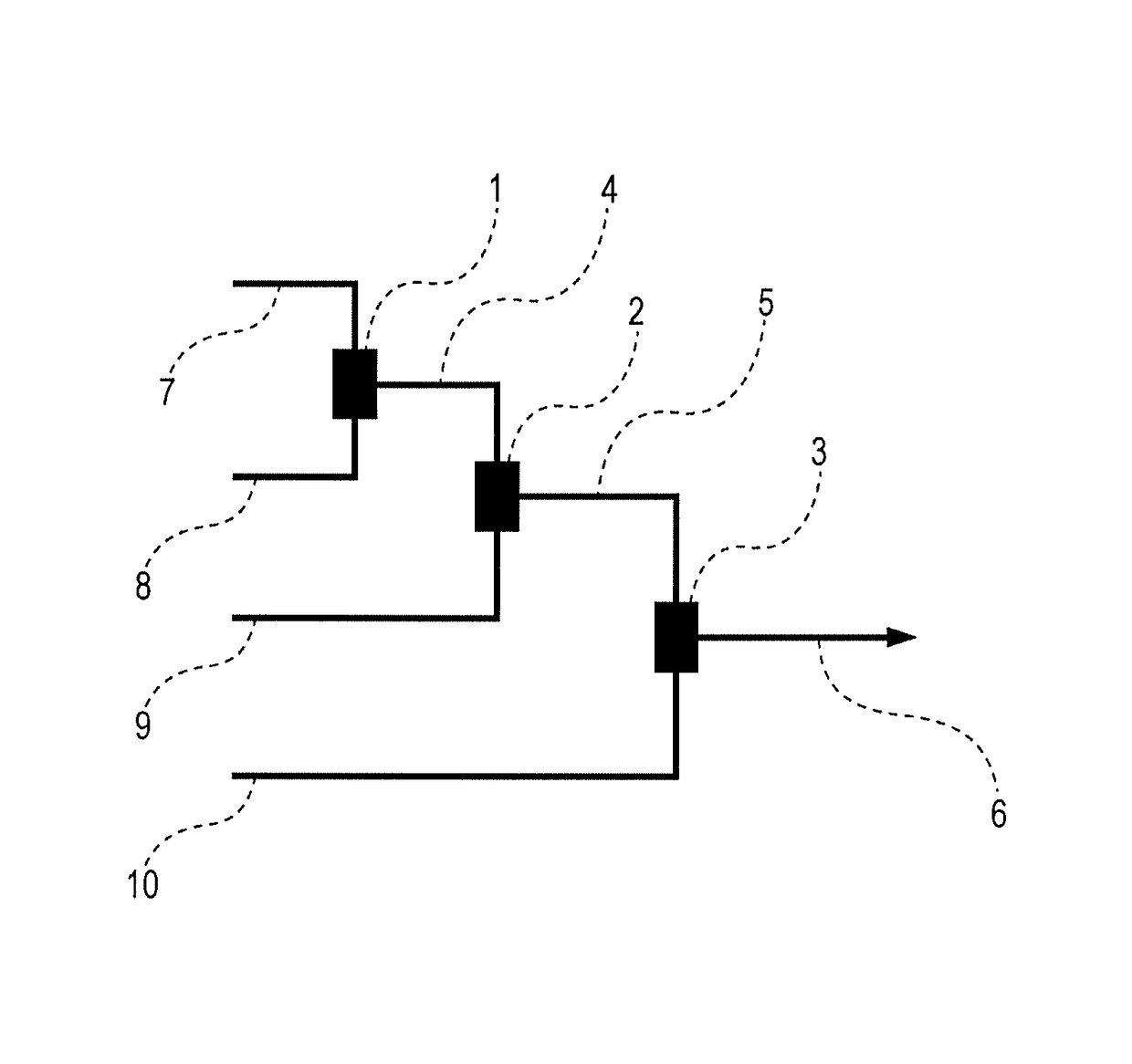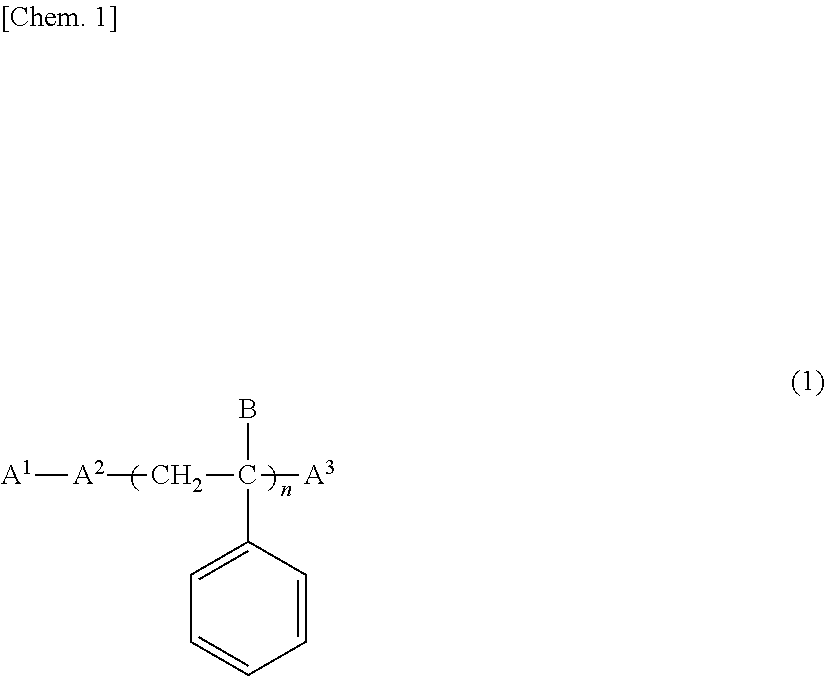Printing agent, printed fabric, and method for producing printing agent
a printing agent and fabric technology, applied in dyeing process, inks, textiles and paper, etc., can solve the problems of coarse particles in ink, increased the likelihood of screen clogging, ink ejection failure, etc., to reduce the amount of coarse particles, excellent printing properties, and high fastness to rubbing
- Summary
- Abstract
- Description
- Claims
- Application Information
AI Technical Summary
Benefits of technology
Problems solved by technology
Method used
Image
Examples
synthesis example 1
[0234]n-Butyllithium (BuLi) used as a polymerization initiator and styrene (St) used as a first monomer were introduced into the T-micromixer M1 illustrated in the FIGURE from the tube reactors P1 and P2 illustrated in the FIGURE, respectively, and reacted with each other by living anionic polymerization to form a polymer.
[0235]The polymer was transferred into the T-micromixer M2 illustrated in the FIGURE through the tube reactor R1 illustrated in the FIGURE. Subsequently, the growing ends of the polymer were trapped with a reaction controlling agent (i.e., 1,1-diphenylethylene (DPE)) introduced from the tube reactor P3 illustrated in the FIGURE.
[0236]Then, methacrylic acid tert-butyl ester (t-BMA) used as a second monomer was introduced into the T-micromixer M3 from the tube reactor P4 illustrated in the FIGURE and reacted with the polymer transferred through the tube reactor R2 illustrated in the FIGURE by continuous living anionic polymerization. Subsequently, the reaction was qu...
synthesis example 2
[0241]BuLi used as a polymerization initiator and St used as a first monomer were introduced into the T-micromixer M1 illustrated in the FIGURE from the tube reactors P1 and P2 illustrated in the FIGURE, respectively, and reacted with each other by living anionic polymerization to form a polymer.
[0242]The polymer was transferred into the T-micromixer M2 illustrated in the FIGURE through the tube reactor R1 illustrated in the FIGURE. Subsequently, the growing ends of the polymer were trapped with a reaction controlling agent (i.e., α-methylstyrene (α-MeSt)) introduced from the tube reactor P3 illustrated in the FIGURE.
[0243]Then, t-BMA used as a second monomer was introduced into the T-micromixer M3 from the tube reactor P4 illustrated in the FIGURE and reacted with the polymer transferred through the tube reactor R2 illustrated in the FIGURE by continuous living anionic polymerization. Subsequently, the reaction was quenched with methanol. Hereby, a block copolymer (PA-2) was produc...
synthesis example 3
[0247]A polymer (P-3) was produced as in Synthesis example 1, except that the types of monomers used, the amount of monomers used, and the like were changed.
PUM
| Property | Measurement | Unit |
|---|---|---|
| acid value | aaaaa | aaaaa |
| particle size | aaaaa | aaaaa |
| particle size | aaaaa | aaaaa |
Abstract
Description
Claims
Application Information
 Login to View More
Login to View More - R&D
- Intellectual Property
- Life Sciences
- Materials
- Tech Scout
- Unparalleled Data Quality
- Higher Quality Content
- 60% Fewer Hallucinations
Browse by: Latest US Patents, China's latest patents, Technical Efficacy Thesaurus, Application Domain, Technology Topic, Popular Technical Reports.
© 2025 PatSnap. All rights reserved.Legal|Privacy policy|Modern Slavery Act Transparency Statement|Sitemap|About US| Contact US: help@patsnap.com



